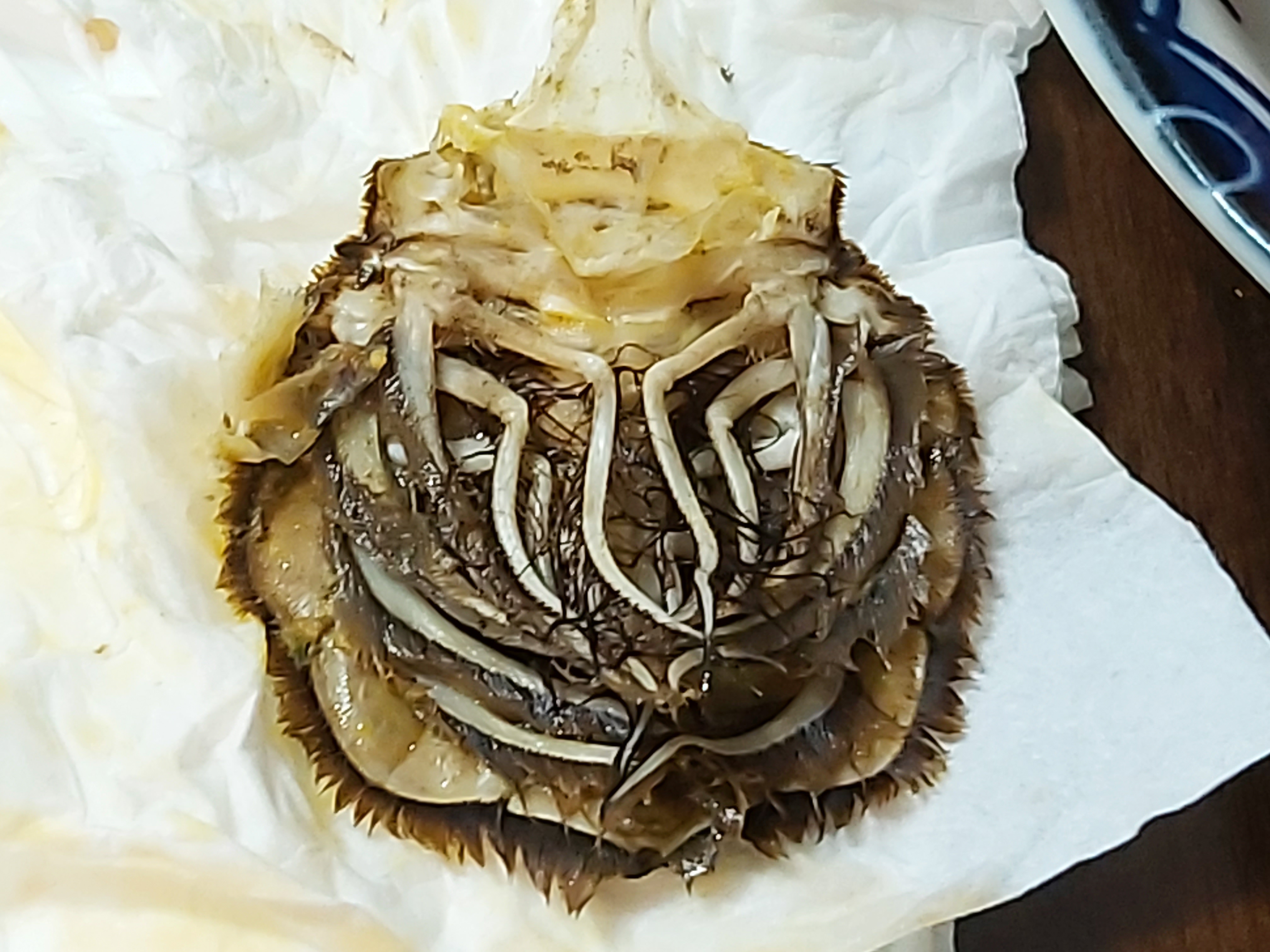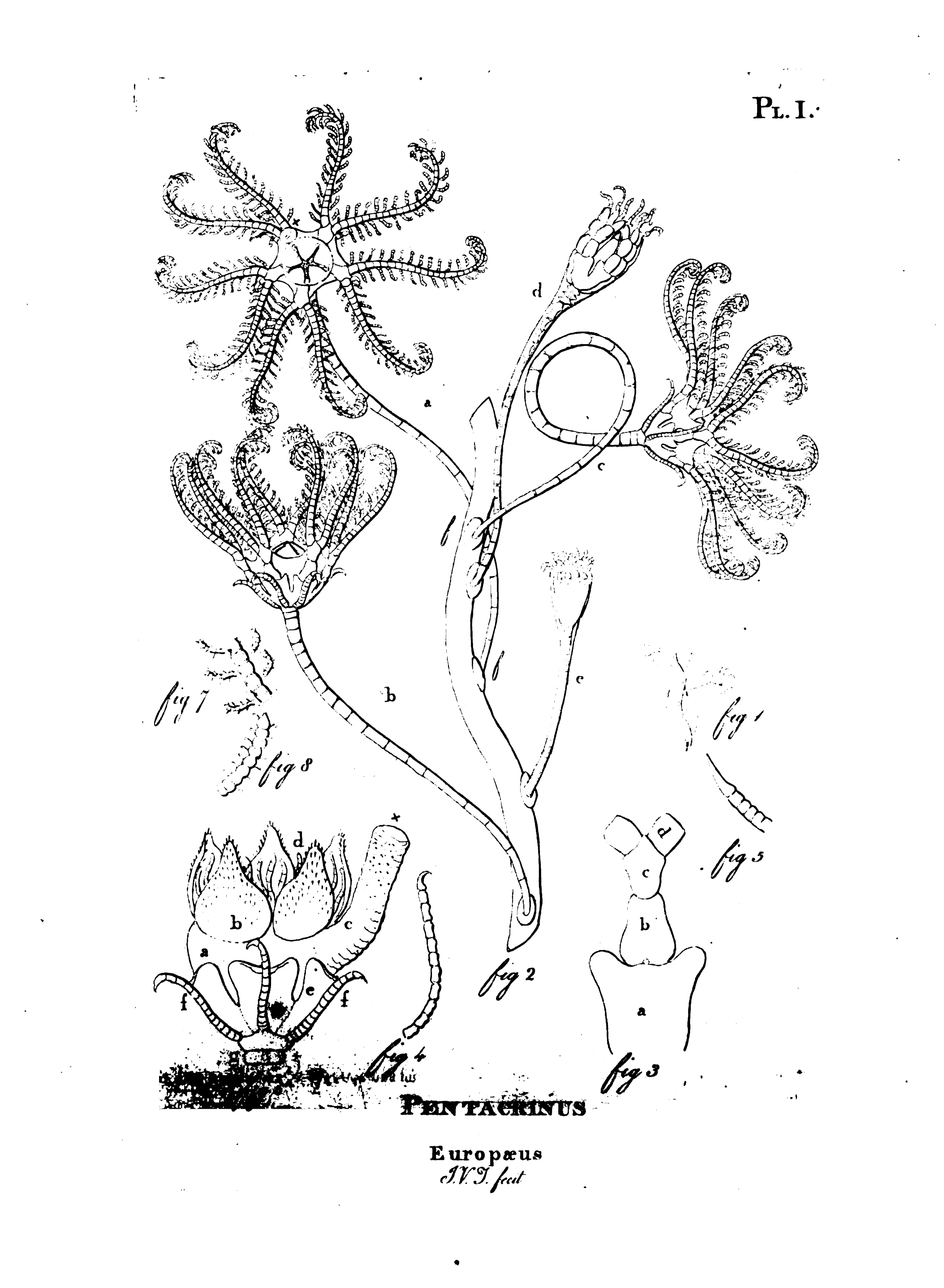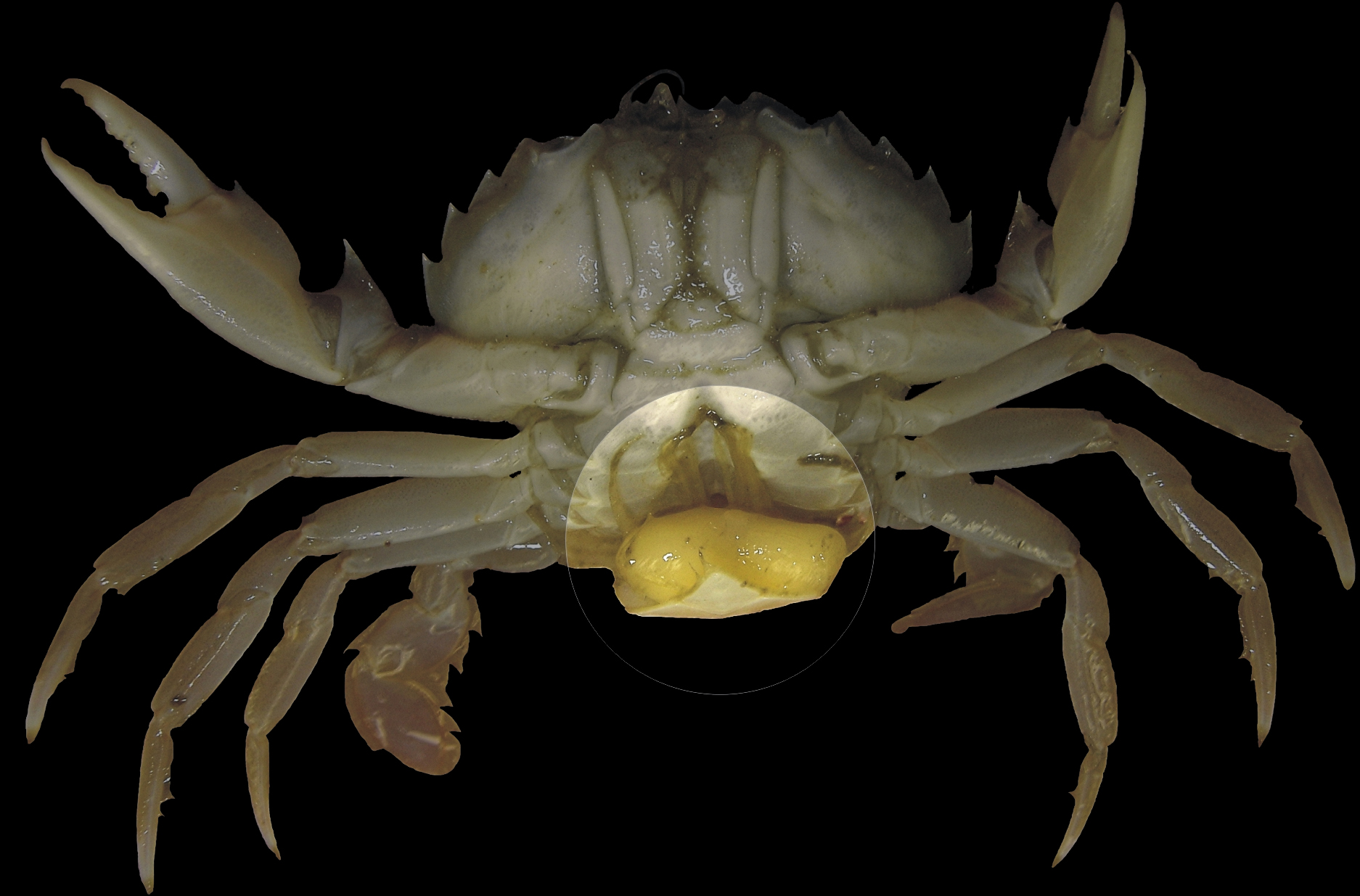|
Postlarvae
Crustaceans may pass through a number of larval and immature stages between hatching from their eggs and reaching their adult form. Each of the stages is separated by a moult, in which the hard exoskeleton is shed to allow the animal to grow. The larvae of crustaceans often bear little resemblance to the adult, and there are still cases where it is not known what larvae will grow into what adults. This is especially true of crustaceans which live as benthic adults (on the sea bed), more-so than where the larvae are planktonic, and thereby easily caught. Many crustacean larvae were not immediately recognised as larvae when they were discovered, and were described as new genera and species. The names of these genera have become generalised to cover specific larval stages across wide groups of crustaceans, such as ''zoea'' and ''nauplius''. Other terms described forms which are only found in particular groups, such as the ''glaucothoe'' of hermit crabs, or the ''phyllosoma'' of slippe ... [...More Info...] [...Related Items...] OR: [Wikipedia] [Google] [Baidu] |
Dendrobranchiata
Dendrobranchiata is a suborder of Decapoda, decapods, commonly known as prawns. There are 540 extant species in seven families, and a fossil record extending back to the Devonian. They differ from related animals, such as Caridea and Stenopodidea, by the branching form of the gills and by the fact that they do not brood their eggs, but release them directly into the water. They may reach a length of over and a mass of , and are widely shrimp fishery, fished and shrimp farm, farmed for human consumption. Shrimp and prawns While Dendrobranchiata and Caridea belong to different Order (biology), suborders of Decapoda, they are very similar in appearance, and in many contexts such as commercial farming and Fishery, fisheries, they are both often referred to as "shrimp" and "prawn" interchangeably. In the United Kingdom, the word "prawn" is more common on menus than "shrimp", while the opposite is the case in North America. The term "prawn" is also loosely used to describe any large s ... [...More Info...] [...Related Items...] OR: [Wikipedia] [Google] [Baidu] |
Pereiopod
The decapod (crustaceans such as a crab, lobster, shrimp or prawn) is made up of 20 body segments grouped into two main body parts: the cephalothorax and the pleon (abdomen). Each segment may possess one pair of appendages, although in various groups these may be reduced or missing. They are, from head to tail: Cephalothorax Head # antennules # antennae #mandibles # first maxillae # second maxillae The head also bears the (usually stalked) compound eyes. The distal portion of a mandible or maxilla which has a sensory function is known as a palp. Thorax / pereon #first maxillipeds #second maxillipeds #third maxillipeds #first pereiopods #second pereiopods #third pereiopods #fourth pereiopods #fifth pereiopods Maxillipeds are appendages modified to function as mouthparts. Particularly in the less advanced decapods, these can be very similar to the pereiopods. Pereiopods are primarily walking legs and are also used for gathering food. They are also the ten legs from which decapods ... [...More Info...] [...Related Items...] OR: [Wikipedia] [Google] [Baidu] |
American Lobster
The American lobster (''Homarus americanus'') is a species of lobster found on the Atlantic Ocean, Atlantic coast of North America, chiefly from Labrador to New Jersey. It is also known as Atlantic lobster, Canadian lobster, true lobster, northern lobster, Canadian Reds, or Maine lobster. It can reach a body length of , and a mass of over , making it not only the heaviest crustacean in the world, but also the heaviest of all living arthropod species. Its closest relative is the European lobster ''Homarus gammarus'', which can be distinguished by its coloration and the lack of spines on the underside of the rostrum (anatomy), rostrum. American lobsters are usually bluish green to brown with red spines, but several color variations have been observed. Distribution ''Homarus americanus'' is distributed along the Atlantic Ocean, Atlantic coast of North America, from Labrador in the north to Cape Hatteras, North Carolina, in the south. South of New Jersey, the species is uncommon, and ... [...More Info...] [...Related Items...] OR: [Wikipedia] [Google] [Baidu] |
Sidney Irving Smith
Sidney Irving Smith (February 18, 1843 in Norway, Maine – May 6, 1926 in New Haven, Connecticut) was an American zoologist. Private life Sidney Smith was the son of Elliot Smith and Lavinia Barton. His brother in law was Addison Emery Verrill. Smith married Eugenia Pocahontas Barber in New Haven, Connecticut on June 29, 1882. The couple had no children, and Eugenia died on March 14, 1916. Smith suffered from hereditary glaucoma, rendering him partially sighted from 1906, and completely blind some years before his death. He died on May 6, 1926 of throat cancer. Education and career In his youth, Sidney Irving Smith became expert on the fauna around his home town, and an expert at making collections, particularly of insects. He studied at the Sheffield Scientific School of Yale University, and received his Ph.B. in 1867. Yale University conferred upon him the honorary degree of M.A. in 1887. He stayed on at Yale, initially as an assistant, but from 1875 as the first professor ... [...More Info...] [...Related Items...] OR: [Wikipedia] [Google] [Baidu] |
John Vaughan Thompson
John Vaughan Thompson FLS (19 November 1779 – 21 January 1847) was a British military surgeon, marine biologist, zoologist, botanist, and published naturalist. Early years John Vaughan Thompson was born in British controlled Brooklyn on Long-Island in the Province of New York, North America on the 19th November 1779. The family returned to England some time after the American victory in the American War of Independence. He studied medicine at the University of Edinburgh (1797–1798), reading anatomy, surgery, midwifery, and botany, before joining the Army in 1799. Work He grew up around Berwick-upon-Tweed where he wrote his first book ''A Catalogue of Plants Growing in the Vicinity of Berwick Upon Tweed'' which was published in 1807. In each of his military postings such as the ''West Indies and Guiana (1800–1809)'', ''Mauritius and Madagascar (1812–1816)'', he continued his natural history studies with two of his papers being read before the Linnean Society on Lond ... [...More Info...] [...Related Items...] OR: [Wikipedia] [Google] [Baidu] |
Ray Society
The Ray Society is a scientific text publication society that publishes works devoted principally to British flora and fauna. As of 2019, it had published 181 volumes. Its publications are predominantly academic works of interest to naturalists, zoologists, botanists and collectors. The society was founded in 1844, largely on the initiative of George Johnston and named after the naturalist John Ray (1627–1705). It is based at the Natural History Museum, London, and is a registered charity under English law. Publications The Ray Society's publications are concerned with natural history, and have special but not exclusive reference to British flora and fauna. They include original monographs on particular groups and topics, facsimiles of historically important volumes and translations of existing works. During Charles Darwin's lifetime, the Ray Society published not only Darwin's two volumes on living barnacles (1851 and 1854) but also the work of many of the foremost British nat ... [...More Info...] [...Related Items...] OR: [Wikipedia] [Google] [Baidu] |
Antonie Van Leeuwenhoek
Antonie Philips van Leeuwenhoek ( ; ; 24 October 1632 – 26 August 1723) was a Dutch microbiologist and microscopist in the Golden Age of Dutch science and technology. A largely self-taught man in science, he is commonly known as " the Father of Microbiology", and one of the first microscopists and microbiologists. Van Leeuwenhoek is best known for his pioneering work in microscopy and for his contributions toward the establishment of microbiology as a scientific discipline. Raised in Delft, Dutch Republic, van Leeuwenhoek worked as a draper in his youth and founded his own shop in 1654. He became well recognized in municipal politics and developed an interest in lensmaking. In the 1670s, he started to explore microbial life with his microscope. This was one of the notable achievements of the Golden Age of Dutch exploration and discovery (). Using single-lensed microscopes of his own design and make, van Leeuwenhoek was the first to observe and to experiment with micro ... [...More Info...] [...Related Items...] OR: [Wikipedia] [Google] [Baidu] |
Copepod
Copepods (; meaning "oar-feet") are a group of small crustaceans found in nearly every freshwater and saltwater habitat (ecology), habitat. Some species are planktonic (inhabiting sea waters), some are benthos, benthic (living on the ocean floor), a number of species have parasitic phases, and some continental species may live in limnoterrestrial habitats and other wet terrestrial places, such as swamps, under leaf fall in wet forests, bogs, springs, ephemeral ponds, and puddles, damp moss, or water-filled recesses (phytotelmata) of plants such as bromeliads and pitcher plants. Many live underground in marine and freshwater caves, sinkholes, or stream beds. Copepods are sometimes used as Ecological indicator, biodiversity indicators. As with other crustaceans, copepods have a larval form. For copepods, the egg hatches into a Crustacean larvae#Nauplius, nauplius form, with a head and a tail but no true thorax or abdomen. The larva molts several times until it resembles the adult an ... [...More Info...] [...Related Items...] OR: [Wikipedia] [Google] [Baidu] |
Cyclops (genus)
''Cyclops'' is one of the most common genera of freshwater copepods, comprising over 400 species. Together with other similar-sized non-copepod fresh-water crustaceans, especially cladocera, they are commonly called ''water fleas''. The name ''Cyclops'' comes from the Cyclops of Greek mythology, as they have a single large eye; in ''Cyclops'', the eye may be either red or black. Anatomy ''Cyclops'' individuals may range from ½–5 mm long and are clearly divided into two sections. The broadly oval front section comprises the head and the first five thoracic segments. The hind part is considerably slimmer and is made up of the sixth thoracic segment and the four legless pleonic segments. Two caudal appendages project from the rear. Although they may be difficult to observe, ''Cyclops'' has 5 pairs of legs. The long first antennae, 2 in number, are used by the males for gripping the females during mating. Afterwards, the female carries the eggs in two small sacs on h ... [...More Info...] [...Related Items...] OR: [Wikipedia] [Google] [Baidu] |
Rhizocephala
Rhizocephala are derived barnacles that parasitise mostly decapod crustaceans, but can also infest Peracarida, mantis shrimps and thoracican barnacles, and are found from the deep ocean to freshwater. Together with their sister groups Thoracica and Acrothoracica, they make up the subclass Cirripedia. Their body plan is uniquely reduced in an extreme adaptation to their parasitic lifestyle, and makes their relationship to other barnacles unrecognisable in the adult form. The name Rhizocephala derives from the Ancient Greek roots (, "root") and (, "head"), describing the adult female, which mostly consists of a network of thread-like extensions penetrating the body of the host. Description and lifecycle As adults they lack appendages, segmentation, and all internal organs except gonads, a few muscles, and the remains of the nervous system. Females also have a cuticle, which is never shed. Other than the minute larval stages, there is nothing identifying them as crustaceans or ... [...More Info...] [...Related Items...] OR: [Wikipedia] [Google] [Baidu] |
Sacculina
''Sacculina'' is a genus of barnacles that is a parasitic castrator of crabs. They belong to a group called ''Rhizocephala''. The adults bear no resemblance to the barnacles that cover ships and piers; they are recognised as barnacles because their larval forms are like other members of the barnacle class Cirripedia. The prevalence of this crustacean parasite in its crab host can be as high as 50%. Habitat ''Sacculina'' live in a marine environment. During their larval stage they are pelagic, but as they form into adults they live as ectoparasites on crabs. Their primary host is the green crab, which is native to the Eastern Atlantic Ocean. Though these crabs have spread to other bodies of waters, it is not believed that ''Sacculina'' barnacles have traveled with them to these new localities. Anatomy The body of the adult parasite can be divided into two parts: one part is called the "externa" where the bulbous reproductive organ of the parasite sticks out of the abdomen of ... [...More Info...] [...Related Items...] OR: [Wikipedia] [Google] [Baidu] |
Crab
Crabs are decapod crustaceans of the infraorder Brachyura, which typically have a very short projecting "tail" (abdomen) ( el, βραχύς , translit=brachys = short, / = tail), usually hidden entirely under the thorax. They live in all the world's oceans, in freshwater, and on land, are generally covered with a thick exoskeleton, and have a single pair of pincers. They first appeared during the Jurassic Period. Description Crabs are generally covered with a thick exoskeleton, composed primarily of highly mineralized chitin, and armed with a pair of chelae (claws). Crabs vary in size from the pea crab, a few millimeters wide, to the Japanese spider crab, with a leg span up to . Several other groups of crustaceans with similar appearances – such as king crabs and porcelain crabs – are not true crabs, but have evolved features similar to true crabs through a process known as carcinisation. Environment Crabs are found in all of the world's oceans, as well as in fresh w ... [...More Info...] [...Related Items...] OR: [Wikipedia] [Google] [Baidu] |









.jpg)